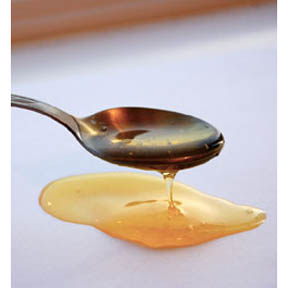By David Colburn
Staff Writer
“Contains No High Fructose Corn Syrup!” Read the packaging for certain loaves of bread and bottles of juice and the statement may be proudly displayed on the very front. In other instances, the ingredient list, in its miniscule font, will contain a section that reads something along the lines of, “Contains 2% or less of the following:” in which the substance is almost always included.
There seems to be a lot of shame associated with high-fructose corn syrup (HFCS). Is the ingredient’s poor image justified?
Despite the controversy, HFCS remains the most commonly added sweetener in the world of processed food. According to eHow.com, HFCS was invented in the 1960s as a less expensive alternative to refined sugar. As the substance is processed from cornstarch, the simple sugar glucose is converted into fructose. Livestrong.com describes the process in further detail, “corn starch is extracted from corn kernels, separating it from the protein, oil and hulls.” Two different processes, as referenced on the previously-mentioned website, convert the corn starch into corn syrup applying different enzymes. The final definitive mixture contains 55 percent fructose and 45 percent glucose through enzymatic reactions.
On a strictly caloric basis, refined sugar and HFCS are strikingly similar; in contrast, sugars in HFCS are blended rather than chemically bonded. The Fructose Information Center has considered the presence of the namesake ingredient in HFCS, the website immediately reminds readers that there is a difference. Fructose itself naturally occurs in many fruits and vegetables, and contains a relatively low glycemic index in comparison to glucose and sucrose.
Where does the controversy arise? The Mayo Clinic clearly states the conflict; “concerns have been raised because of how high-fructose corn syrup is processed.” As referenced on eHow.com, a study at the University of Florida found a correlation between HFCS and leptin resistance. Leptin serves as the hormone that controls one’s appetite; high levels of the hormone often relates to obesity and diabetes.
As recommended by the American Heart Association, the average American woman and man should consume less than 100 and 150 calories from any added sugars, respectively. The recommendation does not differentiate between refined table sugar and HFCS.
Ultimately, health concerns are ambiguous; there are multiple examples of research mapping the detrimental effects of HFCS, yet, as professed by the Mayo Clinic, there is “insufficient evidence to say that high-fructose corn syrup is less healthy than other types of added sweeteners.”
On the other end of the spectrum, NaturalNews.com has organized an array of articles mapping the detrimental aspects of HFCS, which can be viewed here: http://www.naturalnews.com/high-fructose_corn_syrup.html.
For more information on HFCS’ uses and properties: http://www.livestrong.com/article/71553-information-high-fructose-corn-syrup/#ixzz1JGyPhd9w.
For more information on fructose: http://www.fructose.org/high-fructose-corn-syrup.html.





I have never used corn syrup in any of my homemade desserts. Instead, I use maple syrup as sweetener. It’s sweet and healthier. Sugar is a no for me as well.